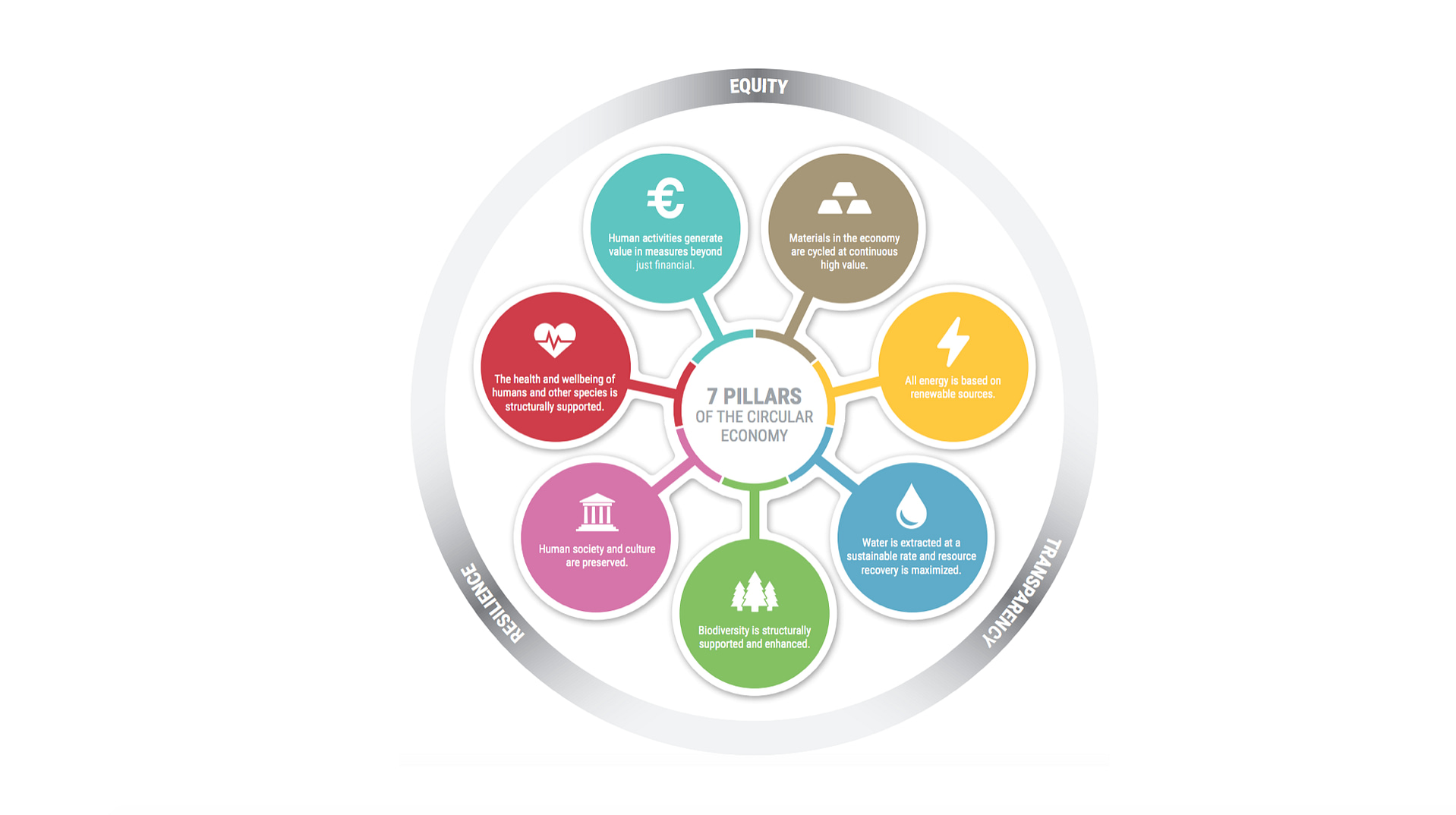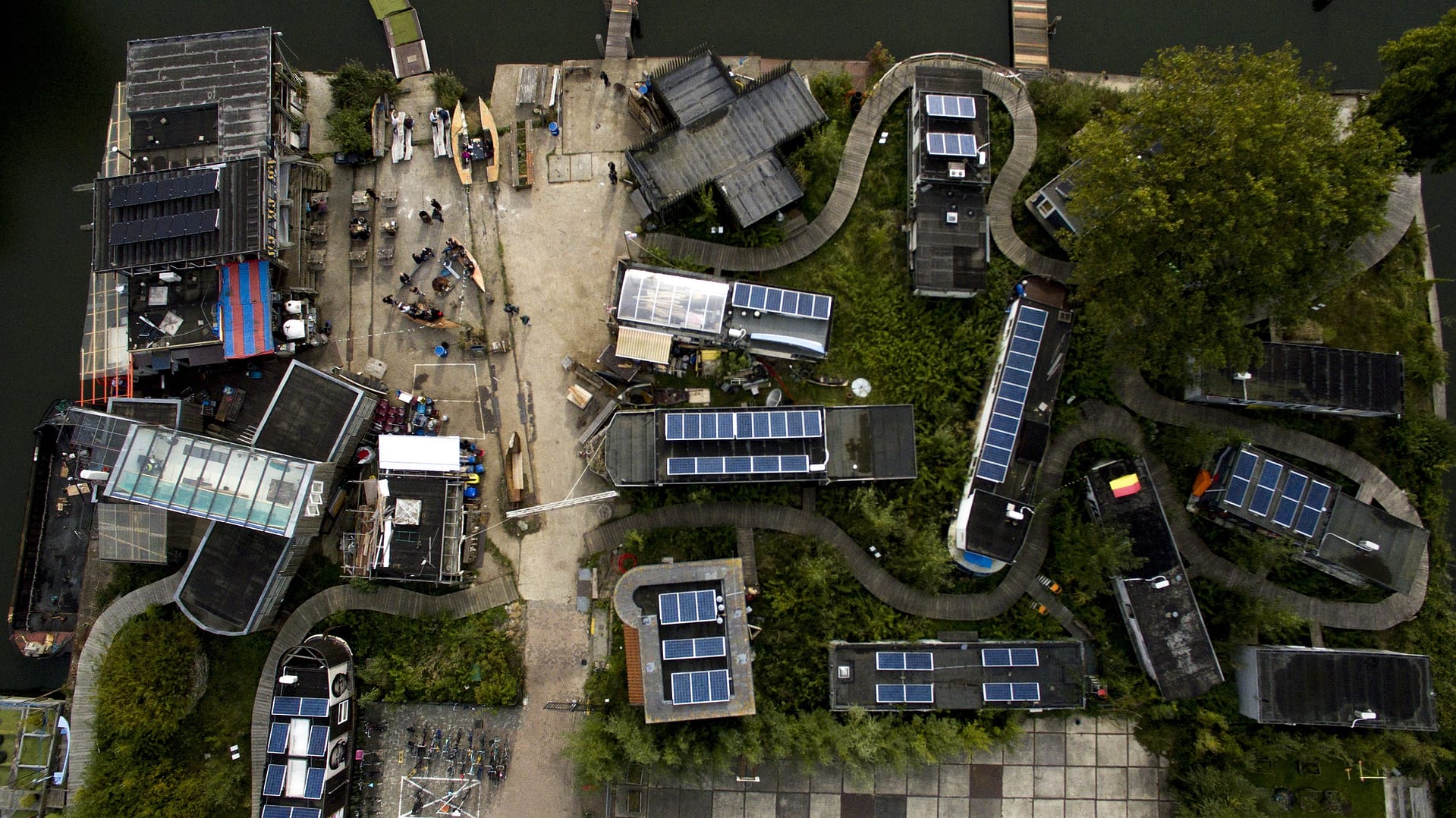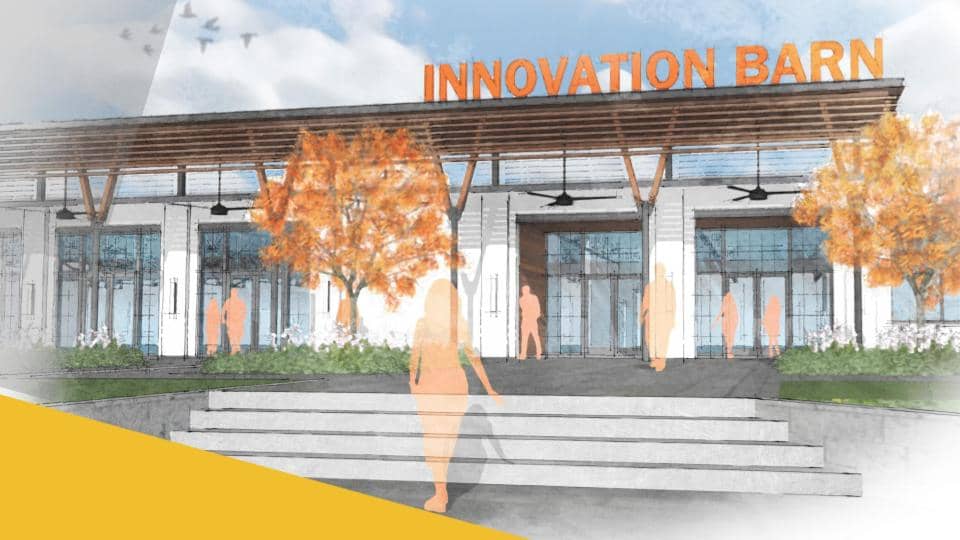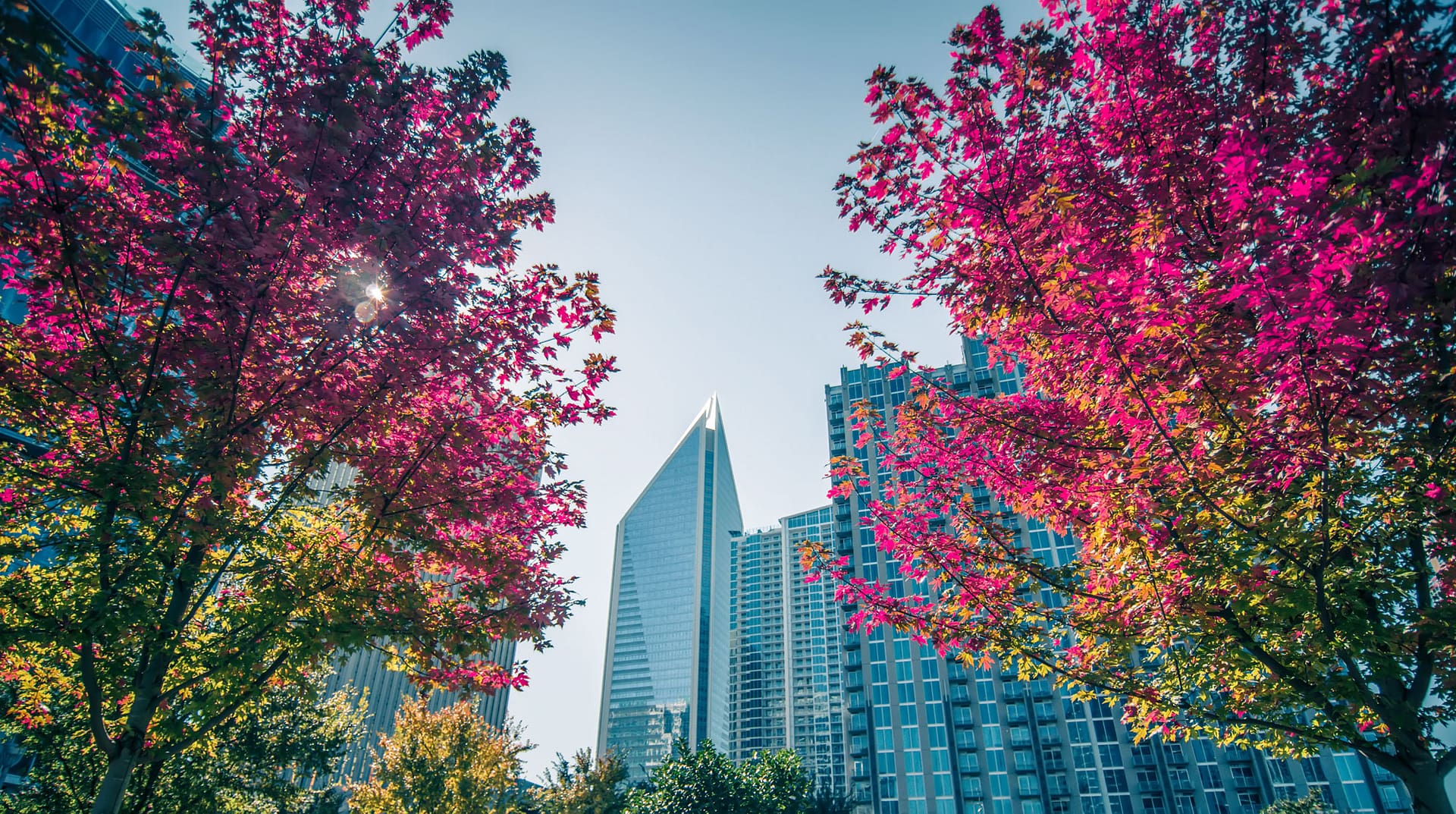Metabolic founder and CEO Eva Gladek presented at Circularity 19 on how we developed our vision of a circular city, and examples of the work we are doing to make that a reality around the world. Here is the video of her presentation and an edited transcript.
The challenge of exponential growth
So I started Metabolic seven years ago with one mission in mind: to transition the global economy to a fundamentally sustainable and circular state. We have three divisions, a consultancy, a think tank, and a venture-building arm. And they’re all working in different ways towards this goal. We’ve identified six primary areas to focus our work, one of which is cities. And that’s what I’m talking about today. But first, I wanted to share a bit of a personal anecdote that explains a bit about why I got into the circular economy and sustainability to begin with, and the kind of underlying philosophy that inspires our work.
When I was growing up in New York City, I wanted to be a molecular geneticist, and I started working in labs pretty early on. One of the things that you do in labs is you grow a lot of bacteria. We had two flasks: one transparent, and the other cloudy. The latter has a number of cells in it already, it has quite a lot of bacteria. So what I would have to do is take some of those cells from the cloudy flask, put them into the new one, and then wait for around 24 hours for the cells to propagate and grow.
I had this eureka moment, a deep, visceral realization around the power of exponential growth when I was doing this, because for the first 23-and-a-half hours it looked like there was nothing going on in this flask, it was just empty. Then in the last 20 minutes, suddenly everything would start to change: the flask would go from a quarter full, to half-full, to full, to all the cells dying very rapidly. It was this understanding of tipping points being so sensitive, that when you have this exponential growth curve you can go from a very safe state of a system, to a completely hostile environment for the cells, in a second’s notice.

Reaching a tipping point
So you can imagine how shocked I was and how uncomfortable I was to see these graphs above, when I went to university to study genetics and took an environmental science class. All of these show the same exact kind of exponential growth curves, these hockey-stick curves that represent positive feedback loops in a system. And in nature, these things never stop on their own: they crash. So this represents no longer what’s going on in a flask, but what’s happening with key resources that are essential to human survival, climate change, biodiversity loss, resource consumption, etc.
This led me to change my entire career, and to focus on how we can actually bend these curves and bring the planet within planetary boundaries. And so we need to get on a fundamentally different track. By using a systems approach though, what we can see is that actually, all of these different problems stem from a limited number of root causes and — if we look carefully — we can create exponential solutions to those exponential problems that we’ve created.
We at Metabolic believe that the circular economy is an excellent tool, a framework for finding those exponential solutions. The thing is, you have to use it as a systems framework, you can’t just look at it superficially. So we have a very holistic vision for the circular economy.

One of the things that you can see in the chart above is that it’s all about materials, and people really focus on how much value we’re losing, and how we can get that back out of the system. But you can get value back in the system in terms of materials in many different ways.

Circular cities for people
So the above photo is an example of how we’re getting e-waste back currently, in a large part of the world. It’s being disassembled by hand over open-pit fires. But we would never call this circular, even though you’re getting that value back. The reason is, it’s creating a massive amount of other problems: health issues, contaminated soil and groundwater. So for that reason, we’ve actually developed a framework called the Seven Pillars of the Circular Economy, where we start with materials as a goal optimizing the cycling of materials, indefinitely within the system. But at the same time, we have to ensure that we are not emitting CO2 in massive quantities, that we’re not damaging water systems, that we’re maintaining health and wellbeing, and looking at all of these things simultaneously. So whenever we say that something is a circular solution, we evaluate it across all of these different dimensions.
In the end, it’s kind of like solving a Rubik’s Cube puzzle; when you want to move that one square to the location that you want to go to, you mess up the entire thing. So you actually have to know that you are dealing with a complex algorithm, a complex system; you need to understand that algorithm to solve the puzzle as a whole. So if we need to transform the entire economy like a Rubik’s Cube puzzle, where do we start?

Circular cities as a leverage point
Several years ago, we did a study to look at all of the resource flows through the entire economy, and to understand where the most impactful areas we could take action would be. So there’s six of them that we’ve identified for the company. The one that I’m going to focus on here is cities. We see cities as a massive leverage point: they only occupy around 3% of the surface area of the planet, but they consume 75% of the resources, and they’re responsible for 60% to 80% of greenhouse gas emissions.
We know of course, that most people live in cities, and that number is only going to go up. So if you are able to redesign cities from the current resource drains these linear systems currently are into actually productive environments that create value in that location, then not only can you bend those exponential growth curves, but you can also create an entire new form of prosperity for the people living in those cities. So knowing this at Metabolic, one of the first things we did as an organization was try to transform cities and create an example, a tangible example, that people would be able to see and understand. We got involved on a project called De Ceuvel. It’s around one kilometer north of Central Station and Amsterdam, it was a polluted piece of land, a post-industrial plot. The city actually said: anyone who comes up with a great circular sustainable idea for the site can have it for 10 years.

Putting circular city theories into practice
So that’s what we did, we got involved with a bunch of architects, we designed a whole strategy for closing the different resource cycles on site, purifying the land using phytoremediation: plants that would clean the soil. And we actually built it. So if you’re in Amsterdam, please come and visit. We used old houseboats, retrofitted entire buildings and put them on the land. In the photo above, you can see the coverage of solar panels. And this has actually become an exciting place for people to visit. In Amsterdam, we have tens of thousands of visitors a year, and it has actually been extremely important in changing people’s mindsets, and understanding that actually, we can close resource cycles on an urban scale, we can approach the design of communities and neighborhoods in a different way.
This has actually led to many more projects where we’ve been asked to design circular strategies for, at first, neighborhoods, and then entire cities. Ultimately, doing an experiment like De Ceuvel is great because it creates tangible examples. But to scale up, you need a process, a system to actually do this with more and more cities. So we developed our systems transformation method for cities. We always start with an analysis of the current state of the system to really understand the material flows, the stakeholders, who’s involved, and then we set goals and develop a vision using this integrated framework of the Seven Pillars.
Then we develop data driven interventions, identifying what is the easiest thing to do first, and what can we do next to build capacity, build resources and money. And then we implement it. So we’ve done this with many cities. Now, we’re going to be doing it with ten more cities in the coming year. But I really wanted to highlight the collaboration that we’ve had with the city of Charlotte. So Charlotte is the first city in the United States that is officially committed to a circular economic development strategy. We worked with them for all of last year on this, on developing the strategy. This is the result from the first analysis that we did — the current state assessment. In the graphic below you can see all of the resources that are going into landfill right now.

Organic waste strategies
To give you an example for how this could look like with organic waste, here are four examples of strategies:
- Our first example is a straightforward one: 30% of food is wasted in people’s homes, because people actually don’t know the difference between a best-by date and an expiration date, and so they throw that out. There’s a huge amount of possibility to prevent that waste with better labeling. It’s very simple.
- Our second example is this Fresh Metre sticker that changes colour when it’s exposed to higher temperatures or air. It actually allows you to see with no doubt that your food is still good or bad. And you can throw it out when the colour changes.
- Example number three is an in-stock restaurant in the Netherlands where they actually make gourmet food in their restaurant, out of things that they collect from supermarkets that would otherwise be thrown away.
- Example four is Protix. There’s always waste that you can’t get rid of, for whatever reason, but then you can actually upcycle it and cascade it into higher-value uses. Protix feeds mixed organic waste to insects, which they in turn transform into animal feed. If you have really specific waste streams, like citrus in that bottom-right example, then you can actually turn that into a polymer that is usable for other functions.

So taking all of these interventions, each one of these white dots on this graph above (from our Circular Rotterdam report) shows how those interventions can be applied. You can actually reduce the total amount of organic waste in a city by 50% and figure out strategies to collect the remainder and then process everything that you’ve collected.

Waste plastic opportunities
As another example, just because plastic is such an important topic, above we see the total amount of value that Charlotte is currently losing by landfilling their plastic, so around a million barrels of oil a year worth of plastic, and $35 million in revenue possible if they just recycled it, not even applied circular solutions per se.
So altogether, we identified with the with the different entrepreneurs and stakeholders, five major business cases for Charlotte around textiles, upcycling food waste into feed, developing a Materials Innovation Lab, recycling plastics with a specific tokenized system, and setting up a concrete-recycling chain. And this would result in a massive amount of CO2 emissions reduction, and up to 34 million US dollars in revenue per year. This is all happening in Charlotte now. So I’m extremely proud of Charlotte as a city. Because in Europe, it’s been easier to get cities to do these studies, but then it’s been a lot harder to get them to actually implement the work. With Charlotte, once they decided that they were going to go for it, they’ve just been actually going for it, and building everything.

So the Innovation Barn, this is a project that’s ongoing right now, it’s going to be the circular heart of Charlotte, a place where people can come and actually experience circular innovations; eat at the zero-waste restaurant; drink beer at the zero-waste bar; see their food being processed into black-soldier flies, which will then be used to feed the chickens; and buy circular products locally. It’s going to host the Materials Innovation Lab where we will also be teaching people how to set up circular businesses and really creating a bottom-up transformation of that economy.
Solve this together
In closing, I want to actually ask you all to consider the type of actions that you’re taking in your own pathway towards a circular economy. Are you working at the areas of highest leverage that you can? Are you making sure that actions that you’re taking are not creating systemic consequences elsewhere? Are you working as high up in the system as possible, as close to the design side as you possibly can? Because ultimately, we’re dealing with this Rubik’s Cube puzzle, and we have to solve it together. And we shouldn’t be wasting anything, least of all time, because we don’t have so much of it.
Is your city on a journey towards the circular economy? See our cluster of tools for circular cities or reach out to Eva Gladek at [email protected]






